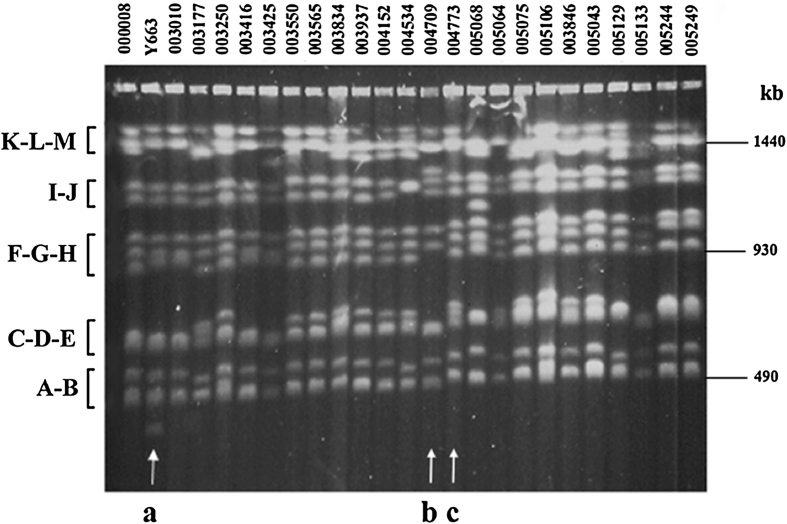Fig. 3.
Electrophoretic karyotyping of 25 C. glabrata clinical isolates belonging to the same phylogenetic sub-group KA002574 which is arrowed in Fig. 2. Five groups of chromosomes (according to the CBS 138 nomenclature, see also Supplementary materials Fig. S1) are shown on the left, and the chromosome sizes on the right. The number of chromosome bands ranges from ten to thirteen but KA002870 (Y663) has fourteen chromosome bands because of its small chromosome (arrowed as a). The large chromosome group (K-L-M) shows a clear variation, from one band as in KA005064 to three bands, as in KA003250, or even four bands, as in KA005129. KA004709 and KA004773, arrowed as b and c, were isolated in 1997 from the same hospital but have clearly different karyotypes. In b we can see only ten bands but the third smallest chromosome (located in the C-D-E group) is likely a double band, while in c there are 12 bands

